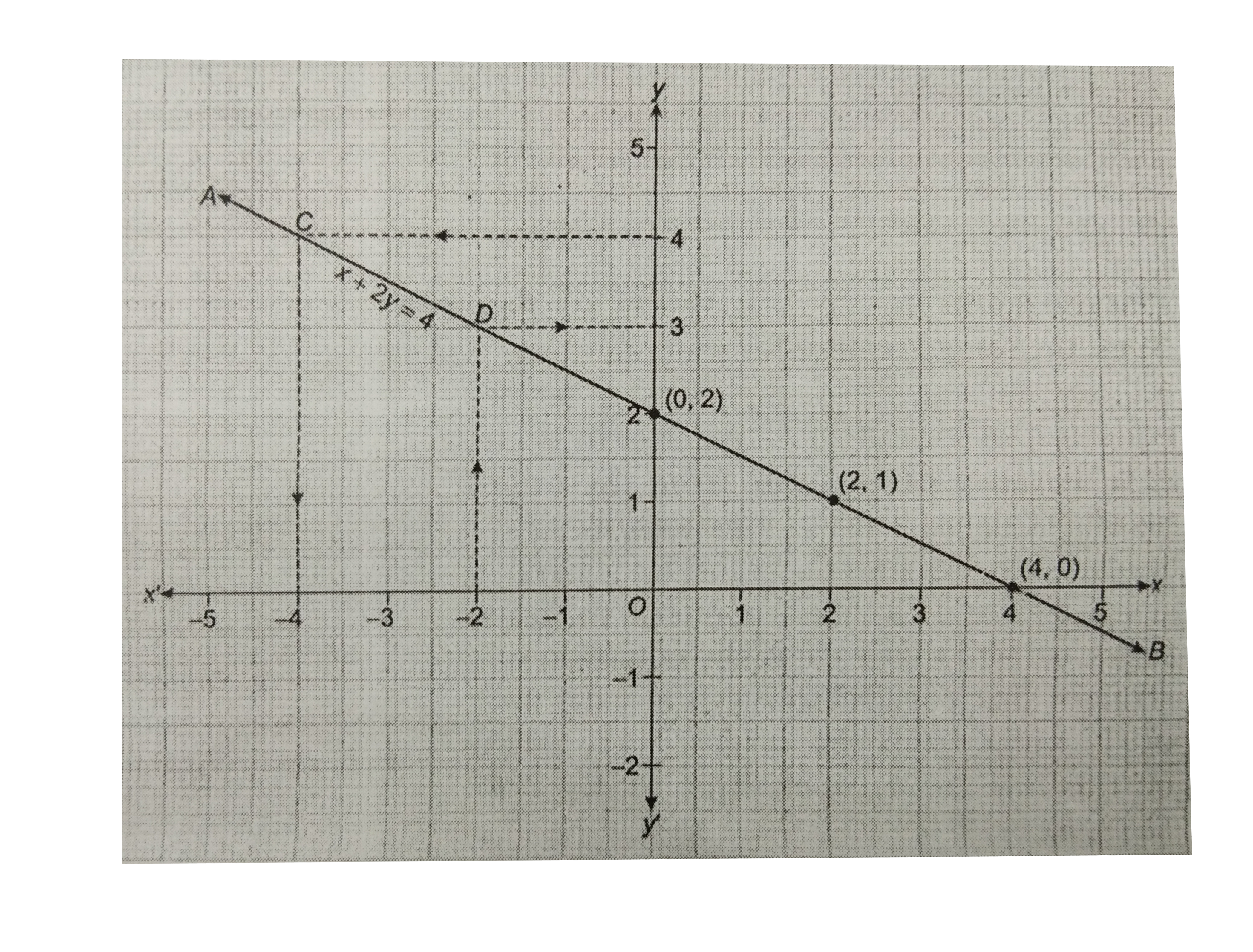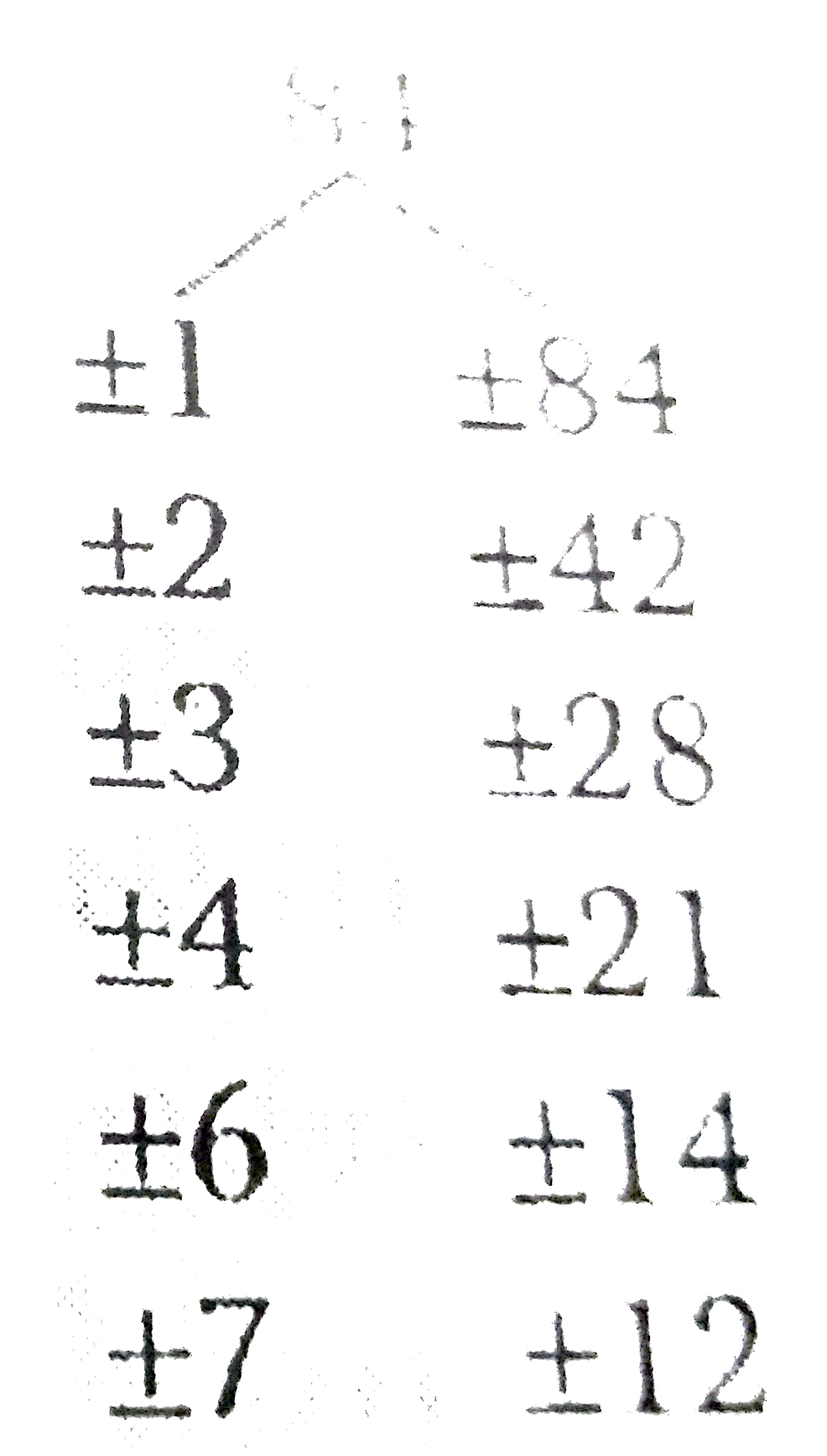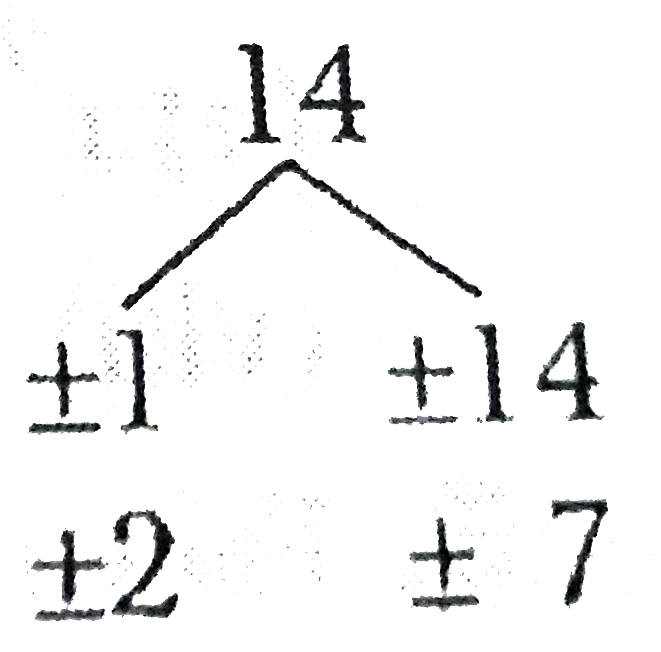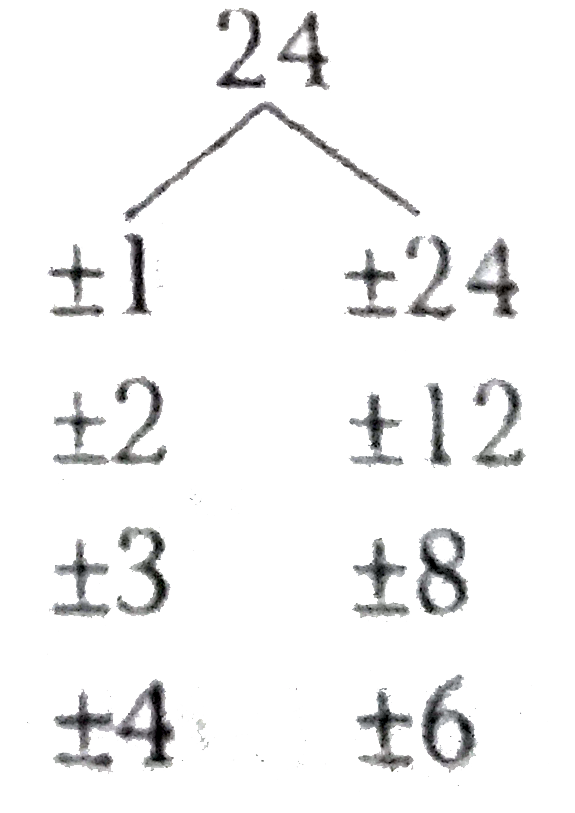InterviewSolution
Saved Bookmarks
This section includes InterviewSolutions, each offering curated multiple-choice questions to sharpen your knowledge and support exam preparation. Choose a topic below to get started.
| 1252. |
Which of the followings denotes an attribute? |
|
Answer» The NUMBER of GIRLS in class-IX |
|
| 1254. |
Evaluate each of the following using proper identity : 51 xx 57 |
|
Answer» |
|
| 1256. |
Represent thenumbersqrt(9.3)on the numberline. |
| Answer» | |
| 1257. |
From the given figure, find : cosx^(@) |
|
Answer» |
|
| 1259. |
A cyclic polygon has n sides such that each of its interior angle measures 144^(@). What is the measures of the angle subtended by each of its side at the geometrical center of the polygon. |
|
Answer» `144^(@)` |
|
| 1260. |
A moneylender found that a fall in the annual rate of simple interest form 7% to 6% resulted in his amount of income being reduced by Rs 212.50. Find his capital. (in Rs) |
| Answer» SOLUTION :21250 | |
| 1262. |
Are the following statements True? Give reasons for your answers with an example. Every integer is a rational number |
|
Answer» |
|
| 1263. |
If A={:[(2,3),(1,-4)]:}, thn prove that (1)/(2)(A+A^(T)) is a symmetric matrix. |
| Answer» | |
| 1264. |
Two sides AB, BC and median AM of one triangle ABC are respectively equal to sides PQ and QR and median PN of DeltaPQR (See figure). Show that: (i) DeltaABM ~= DeltaPQN (ii) DeltaABC ~= DeltaPQR |
|
Answer» |
|
| 1266. |
Determine which of the following polynomials has (x+1) a factor : x^(3) + x^(2) + x + 1 |
|
Answer» |
|
| 1267. |
Write each of the following as an equation in two variables : y = 2 |
|
Answer» |
|
| 1268. |
Write True orFalse: Give reasons for your answers.(i) Linesegment joining the centre to any point on the circle is a radius of thecircle.(ii) A circlehas only finite number of equal chords.(iii) If acircle is divided into three equa |
|
Answer» |
|
| 1269. |
1500 families with 2 children were selected randomly , and the following data were recorded. {:("Number of girls in a family",2,1,0),("Number of families",475,814,211):} Compute the probability of a family , chosen at random , having No girls. Also check whether the sum of these probabilities is 1. |
|
Answer» |
|
| 1270. |
1500 families with 2 children were selected randomly , and the following data were recorded. {:("Number of girls in a family",2,1,0),("Number of families",475,814,211):} Compute the probability of a family , chosen at random , having 1 girl |
|
Answer» |
|
| 1271. |
1500 families with 2 children were selected randomly , and the following data were recorded. {:("Number of girls in a family",2,1,0),("Number of families",475,814,211):} Compute the probability of a family , chosen at random , having 2 girls |
|
Answer» |
|
| 1272. |
AB is a chord of a circle with centre O and diameter 20 cm. If AB = 12 cm, find the distance of AB from O. |
|
Answer» |
|
| 1273. |
Parveen wanted to make a temporaryshelter for her car, by making a box-like structure with tarpaulin thatcovers all the four sides and the top of the car (with the front face as aflap which can be rolled up). Assuming that the stitching margin |
|
Answer» |
|
| 1274. |
Fill in theblanks:(i) The centreof a circle lies in of the circle. (exterior/ interior)(ii) A point,whose distance from the centre of a circle is greater than its radius lies inof the circle.(exterior/ interior)(iii) Thelongest cho |
|
Answer» |
|
| 1275. |
With the help of the remainder theorem, find the remainder when the polynomial x^(3) + 2x^(2) - 4x -6 is divided by each of the following divisors : x-1 |
|
Answer» |
|
| 1276. |
With the help of the remainder theorem, find the remainder when the polynomial x^(3) + 2x^(2) - 4x -6 is divided by each of the following divisors : x-2 |
|
Answer» |
|
| 1277. |
With the help of the remainder theorem, find the remainder when the polynomial x^(3) + 2x^(2) - 4x -6 is divided by each of the following divisors : x+1 |
|
Answer» |
|
| 1278. |
With the help of the remainder theorem, find the remainder when the polynomial x^(3) + 2x^(2) - 4x -6 is divided by each of the following divisors : x-3 |
|
Answer» |
|
| 1279. |
With the help of the remainder theorem, find the remainder when the polynomial x^(3) + 2x^(2) - 4x -6 is divided by each of the following divisors : x+2 |
|
Answer» |
|
| 1280. |
With the help of the remainder theorem, find the remainder when the polynomial x^(3) + 2x^(2) - 4x -6 is divided by each of the following divisors : x + 3 |
|
Answer» |
|
| 1281. |
For the polynomial p (x), if p ( -2 ) = 0, then.......... is a factor of p (x). |
|
Answer» 2x-1 |
|
| 1282. |
The sides of a triangle m easure 8 cm, 12 cmand 6 cm. Then, the sem iperim eter of the triangle is ..........cm. |
|
Answer» 12 |
|
| 1284. |
Read the following statement : ''A square is a polygon made up of four line segments, out of which, length of 3 line segments are equal to the length of forth one and all its angles are right angles''. Define the terms used in this definition which you feelnecessary. Are there any undefined terms in this ? Can you justify that all the angles and sides of a square are equal? |
|
Answer» Solution :For the desired problem, we need to define the following terms: Polygon : Any closed figure made up of three or more line segments. Line segments : Part of a line with twoend points. Line : UNDEFINED term. Point : Undefined terms. Ray : Part of a line with one end point. Right angle : Angle whose MEASURE is `90^(@)`. Now, from Euclid's fourth postulate, ''all right angles are equal to one another'' and in a square, all angles are right angles, therefore all angles are equal. From Euclid's FIRST axion ''things which are equal to the same thing are equal to one another'' and it is given that 3 line segments are equal to forth line SEGMENT. Therefore, all the 4 sides of a square are equal. |
|
| 1285. |
Express the following rational numbers in decimal form. (115)/(4) |
|
Answer» |
|
| 1286. |
Draw the graph of the equation x+2y =4, use graph to find : (a) X_(1), the value of x when y =4 (b) Y_(1) the value of y when x= -2 |
|
Answer» `rarr` x=4-2y Let y=0 then x=4-2 `xx` 0=4 Let y =1then x=4-2`xx` 1=2 Let y =2 thenx=4-2`xx`2=0 Table for values:  Plot the points (4,0), (2,1) and (0,2) on same graph and join. Plot the points (4,0), (2,1) and (0,2) on same graph and join.  (a) To find `x_(1)` the VALUE of x when y =4 draw a horizontal line through y =4 which meets AB at C. Through C, draw a vertical line which meets x axis at x=-4 `therefore` At y =4 we GET x =-4 (b) To find `y_(1)` the value of y, when x =-2 draw a vertical line through x = -2 which meets AB at D. Through d draw a horizontal line which meets y axis at y =3 `therefore` At x=-2 we get y =3 |
|
| 1287. |
Factorise : x^(2) + 4y^(2) + 25z^(2) - 4xy + 20 yz - 10 zx |
|
Answer» |
|
| 1288. |
Classify the following polynomials into linear quadratic and cubic polynomials : 4y |
|
Answer» |
|
| 1289. |
Without actually dividing find which of the following are terminating decimals. (13)/(20) |
|
Answer» |
|
| 1290. |
Factorise the following using appropriate identities. (i) 16x ^(2) + 24y + 9y ^(2) (ii) 4y ^(2) - 4y +1 (iii) 4x ^(2) - (y ^(2))/( 25) (iv) 18a ^(2) - 50 (v)x ^(2) + 5x + 6 (vi) 3p ^(2) - 24 p + 36 |
|
Answer» (ii) `(2Y -1) ^(2)` (iii) `(2x + (y)/(5)) (2x - (y)/(5))` (iv) ` 2 (3a +5) (3a -5)` (v) `(x+3) (x+2)` (vii) `3(P -6) (P-2)` |
|
| 1291. |
Classify the following numbers as rational or irrational. 0.3030030003… |
|
Answer» |
|
| 1292. |
Two coins are tossed simultaneously 500 times , and we get Two heads : 105 times One head : 275 times No head : 120 times Find the probability of occurrence of each of these events. |
|
Answer» |
|
| 1293. |
Curved surface area of a cone is308 cm ^(2)and its slant height is 14 cm Find.(i) radius of the base (ii) Total surface area of the cone. |
|
Answer» (II) ` 462 cm ^(2) ` |
|
| 1294. |
Simplify the following expressions : (3+sqrt3)(2+sqrt2) |
|
Answer» |
|
| 1295. |
Factorise : (2x^(2)+5x)(2x^(2)+5x-19)+84 |
|
Answer» Solution :LET `2x^(2)+5x=a` `therefore ` GIVEN expression reduces to `a(a-19)+84=a^(2)-19a+84` Here, a=1, b=-19, c=84 `therefore ac=1xx84=84` Now, we take two factors of 84 whose sum is -19. Such factors are -7 and -12. `therefore a^(2)-19a+84=a^(2)-7a-12a+84` `=a(a-7)-12(a-7)=a(a-7)(a-12)` `=(2x^(2)+5x-7)(2x^(2)+5x-12)` Similarly, these can also be factorised further. `2x^(2)+5x-7=2x^(2)+7x-2x-7` =(2x+7)-1(2x+7) =(2x+7)(x-1) and `2x^(2)+5x-12=2x^(2)+8x-3x-12` =2x(x+4)-3(x+4)=(x+4)(2x-3) `therefore` From (1), (2) and (3), we GET `(2x^(2)+5x)(2x^(2)+5x-19)+84` `=a^(2)-19a+84 "" ("where" a=2x^(2)+5x)` =(2x+7)(x-1)(x+4)(2x-3)   
|
|
| 1296. |
Are the following statements True? Give reasons for your answers with an example. Zero is a rational number |
|
Answer» |
|
| 1297. |
AB is a line segment and P is its midpoint. D and E are points on the same side of AB such that angle BAD = angle ABE and angle EPA = angle DPB (see the given figure). Show that: |
|
Answer» |
|
| 1298. |
Factorise 4x ^(2) + 9y ^(2) + 25 z ^(2) - 12 xy - 30 yz + 20 zx |
|
Answer» |
|
| 1299. |
A coin is tossed 1000 times with the following frequencies : Head : 455, Tail : 545 Compute the probability for each event. |
|
Answer» |
|
| 1300. |
Express each of the following decimal numbers in (p)/(q) form 0.bar(5) |
|
Answer» |
|